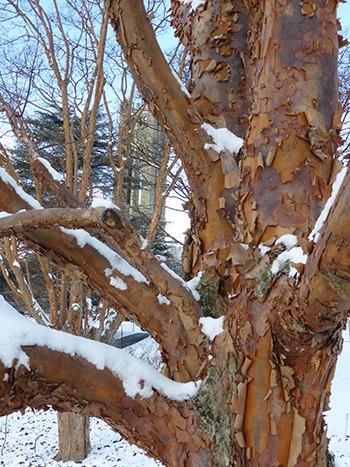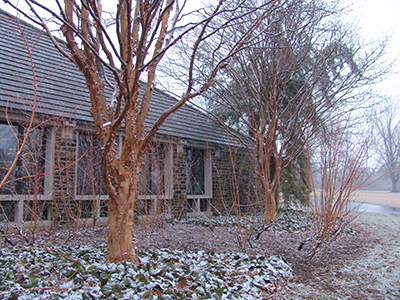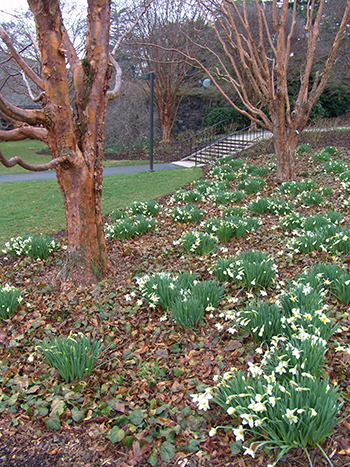
Acer griseum

2018 Summer Intern
Located adjacent to Sharples Dining Hall grows a peculiar, endangered plant. Acer griseum, or paperbark maple, not only has beautiful cinnamon-colored bark which stands out during every season of the year, but it has an odd genetic history.
E.H. Wilson was the first to travel to Western China and bring this species to England and later to the United States. His seed collection of 1901 successfully germinated 100 seeds of A. griseum with relative ease. Unlike Wilson in his hayday of producing specimens, today we observe 5% of seeds are viable to grow. This low seed viability complicates the species’ already difficult survival.
It is endangered in China, its natural habitat, from the encroaching boundaries of human activity. In 1994, the North America-China Plant Exploration Consortium (NACPEC) expedition to Hubei to located naturally occurring paperbark maples and collected more specimens to help prevent the potential eradication of this plant. They were able to bring back several young saplings, ten of which are in the care of NACPEC institutions. Those trees have only recently started to produce seeds and have not yet been introduced into other gardens.

An understory tree, this maple grows to 20 to 30 feet in height. photo credit: R. Robert
Acer griseum holds trifold leaves with three coarsely toothed leaflets that are green on top and gray-green underneath. Its latin name griseum means gray which refers to the underside of the leaves. An understory tree, this maple grows to 20 to 30 feet in height.

Acer griseum, or paperbark maple, not only has beautiful cinnamon-colored bark which stands out during every season of the year. photo credit: J. Coceano
There are many good reasons to have this tree in your garden. It is a great small shade tree that lives for at least one hundred years and has multi-seasonal interest. However, most important reason is the successful continuation of the species. With humans disrupting the ecosystem through unsustainable environmental practices, the biodiversity is reduced little by little, year after year. Because of this, incredible specimens like Acer griseum are at risk.
Do consider adding this stunning specimen to your garden as a conversation piece, for fall color, for winter interest, and in aid of biodiversity preservation.





No Comments